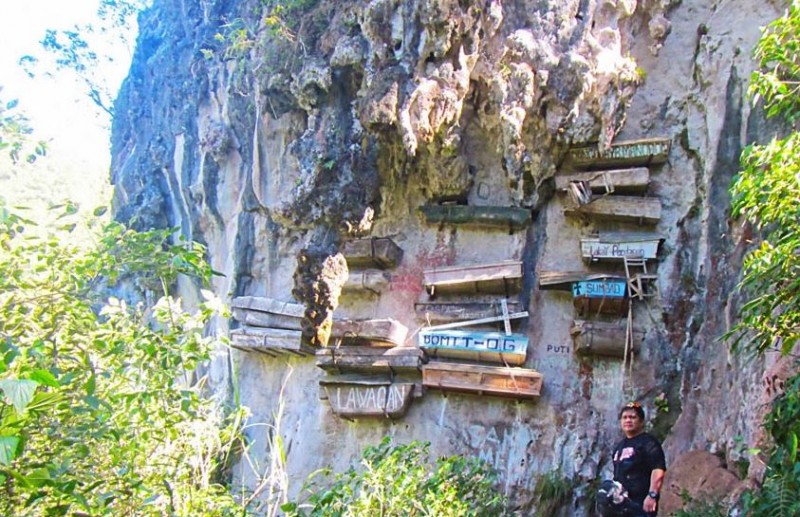
Introduction
Sagada, a small town located in the northern part of the Philippines, is renowned for its intriguing burial practice of hanging coffins. This ancient tradition has fascinated visitors from around the world, offering a glimpse into the unique customs and beliefs of the indigenous people of Sagada. In this article, we will delve into the history, significance, and cultural aspects of the hanging coffins of Sagada.
The Origin and History of Hanging Coffins
The practice of hanging coffins in Sagada dates back thousands of years, with its origins rooted in the indigenous Igorot people. The Igorots believed that by placing their deceased loved ones in hanging coffins, they would be closer to the heavens and their spirits would have an easier journey to the afterlife. The practice is believed to have started as a way to protect the coffins from animals and to keep them away from floods.
The Cultural Significance of Hanging Coffins
Hanging coffins hold immense cultural significance for the people of Sagada. It is considered a sacred tradition that preserves the memory of ancestors and upholds the values and beliefs of the community. The act of hanging coffins is seen as a way to honor and show respect for the deceased, ensuring their spirits are at peace.
The Rituals and Process of Hanging Coffins
The process of hanging coffins is meticulous and requires the expertise of the community elders. It involves carefully selecting the appropriate location on the cliffs, preparing the coffins, and maneuvering them to their final resting place. The rituals associated with hanging coffins often include prayers, chants, and offerings to appease the spirits and ensure a smooth transition to the afterlife.
The Preservation and Maintenance of Hanging Coffins
Preserving and maintaining the hanging coffins is a responsibility passed down through generations. The community places great importance on the upkeep of the coffins, using natural materials and traditional techniques to ensure their longevity. Regular inspections and repairs are conducted to safeguard these unique burial sites.
Tourism and the Hanging Coffins of Sagada
The hanging coffins of Sagada have become a significant attraction for tourists worldwide. Visitors are drawn to the town to witness this extraordinary burial practice and learn about the rich cultural heritage of the Igorot people. Tourism has provided economic opportunities for the locals, but it also brings challenges in terms of preserving the integrity and sanctity of the burial sites.
Challenges and Preservation Efforts
As tourism increases in Sagada, there is a need to balance the preservation of the hanging coffins with the influx of visitors. Efforts are being made by the community and local authorities to implement sustainable tourism practices, ensuring that the cultural significance and natural beauty of Sagada are protected for future generations.
The Impact of Hanging Coffins on Sagada's Identity
The hanging coffins have become an integral part of Sagada's identity. They serve as a symbol of the town's rich cultural heritage and unique traditions. The practice has garnered global recognition and has contributed to the local economy, making Sagada a destination that celebrates its indigenous roots.
The Symbolism of Hanging Coffins
Hanging coffins symbolize the connection between the living and the dead. They represent the belief in an afterlife and the continuation of the spirit's journey beyond death. The sight of the coffins hanging precariously on the cliffs evokes a sense of awe and contemplation, inviting visitors to reflect on life, mortality, and the transcendent nature of the human spirit.
Hanging Coffins: Myths and Legends
Over the centuries, myths and legends have developed around the hanging coffins of Sagada. These tales add an air of mystery and intrigue to the already captivating practice. Stories of spirits guarding the coffins or the supernatural powers associated with the burial sites have been passed down through generations, adding to the allure of Sagada's hanging coffins.
Hanging Coffins: Cultural Heritage and Global Recognition
Sagada's hanging coffins have gained international attention and recognition as a unique cultural heritage. Their significance goes beyond the boundaries of the Philippines, with scholars, researchers, and cultural enthusiasts from around the world visiting Sagada to study and document this remarkable burial practice.
The Beauty and Awe of Sagada's Hanging Coffins
The hanging coffins, set against the backdrop of Sagada's picturesque landscapes, create a scene of unparalleled beauty and awe. The cliffs, shrouded in mist, with coffins suspended in mid-air, leave a lasting impression on visitors. It is a testament to the ingenuity and reverence of the Igorot people and the harmonious coexistence between nature and human practices.
Sustainable Tourism and Cultural Sensitivity
As tourism grows, it is crucial to promote sustainable practices and cultural sensitivity in Sagada. Visitors should be educated about the significance and sacredness of the hanging coffins, respecting the customs and traditions of the local community. By adopting responsible tourism practices, we can ensure that future generations can continue to appreciate and learn from the hanging coffins of Sagada.
The Future of Hanging Coffins
Looking ahead, the hanging coffins of Sagada face both challenges and opportunities. It is essential to strike a balance between preserving the cultural heritage and embracing sustainable tourism. By nurturing a deep respect for the traditions and values associated with hanging coffins, Sagada can continue to be a beacon of cultural preservation and understanding.
Conclusion
The hanging coffins of Sagada represent a captivating blend of history, spirituality, and cultural identity. This unique burial practice showcases the ingenuity and deep-rooted beliefs of the Igorot people. As visitors stand in awe of these suspended coffins, they are not only witnessing a remarkable sight but also engaging with a tradition that connects the past to the present and invites reflection on the mysteries of life and death.
Rise of Sustainable Tourism: How Travelers Can Contribute to Greener World
Jaipur: The Pink City of India
A Journey through History: Must-Visit Historical Sites Around the World